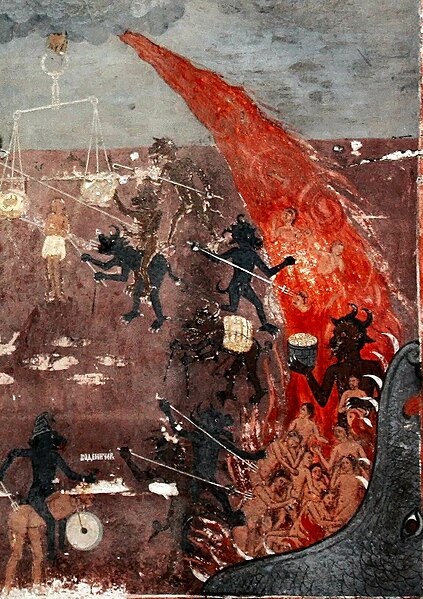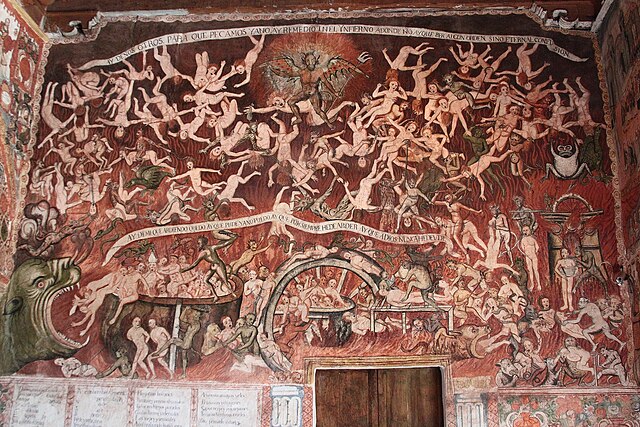Inferno is the first part of Italian writer Dante Alighieri's 14th-century narrative poem The Divine Comedy. It is followed by Purgatorio and Paradiso. The Inferno describes the journey of a fictionalised version of Dante himself through Hell, guided by the ancient Roman poet Virgil. In the poem, Hell is depicted as nine concentric circles of torment located within the Earth; it is the "realm ... of those who have rejected spiritual values by yielding to bestial appetites or violence, or by perverting their human intellect to fraud or malice against their fellowmen". As an allegory, the Divine Comedy represents the journey of the soul toward God, with the Inferno describing the recognition and rejection of sin.
Canto I from the Inferno, the first part of the Divine Comedy by Dante Alighieri
Gustave Doré's engravings illustrated the Divine Comedy (1861–1868). Here, Dante is lost at the start of Canto I of the Inferno.
Gustave Doré's illustration of Canto III: Arrival of Charon
The Harrowing of Hell, in a 14th-century illuminated manuscript, the Petites Heures de Jean de Berry
In religion and folklore, hell is a location or state in the afterlife in which souls are subjected to punitive suffering, most often through torture, as punishment after death. Religions with a linear divine history often depict hells as eternal destinations, the biggest examples of which are Christianity and Islam, whereas religions with reincarnation usually depict a hell as an intermediary period between incarnations, as is the case in the Indian religions. Religions typically locate hell in another dimension or under Earth's surface. Other afterlife destinations include heaven, paradise, purgatory, limbo, and the underworld.
Medieval illustration of hell in the Hortus deliciarum manuscript of Herrad of Landsberg (about 1180)
Hell – detail from a fresco in the medieval church of St Nicholas in Raduil, Bulgaria
Preserved colonial wall paintings of 1802 depicting Hell, by Tadeo Escalante, inside the Church of San Juan Bautista in Huaro, Peru
In this ~1275 BC Book of the Dead scene the dead scribe Hunefer's heart is weighed on the scale of Maat against the feather of truth, by the canine-headed Anubis. The ibis-headed Thoth, scribe of the gods, records the result. If his heart is lighter than the feather, Hunefer is allowed to pass into the afterlife. If not, he is eaten by the crocodile-headed Ammit.








